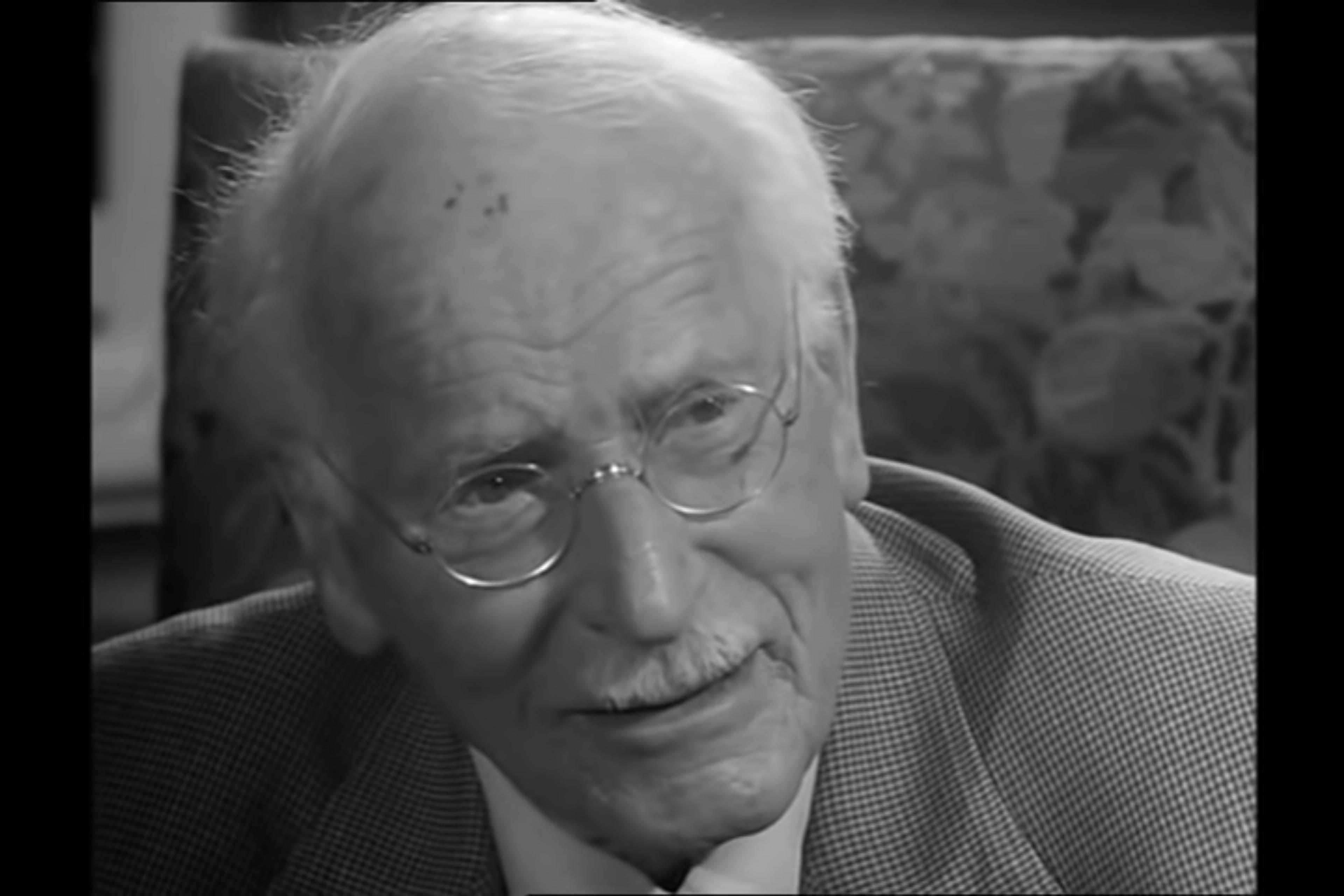In 1900, Sigmund Freud treated a young woman called ‘Dora’ who had fainting spells, a lingering cough, and had lost her voice. After diagnosing her with hysteria, Freud learned about an incident between Dora and a family friend, Herr K. Dora was supposed to meet up with Herr K and his wife to watch a church festival, but when she arrived at his office, Herr K was there alone. He suddenly ‘clasped the girl to him and pressed a kiss upon her lips,’ Freud wrote in the case study ‘Fragment of an Analysis of a Case of Hysteria’ (1905).
Freud suspected that, along with being kissed by Herr K, Dora felt ‘the pressure of his erect member against her body’, which was ‘revolting to her’. Dora didn’t remember this happening, but Freud proposed that she dismissed it from her memory. He speculated that her symptoms were a consequence of this repression – that her perception of it had been ‘replaced by the innocent sensation of pressure upon her thorax, which in turn derived an excessive intensity from its repressed source.’
This is a classic example of Freud’s ideas about repression: if you have a distressing thought, shoving it out of your mind will only work for so long. It will camp out in the unconscious, biding its time until it can emerge again, often through physical sensations, behaviours, emotions or dreams. One of the goals of analysis was to identify repressed content and make it conscious again.
Freud’s psychosexual interpretations eventually fell out of favour, but the idea that it is problematic to bury one’s thoughts has remained. Psychologists have studied how trying to not think about something can lead to thinking about it even more. Tested therapeutic approaches such as exposure therapy, acceptance and commitment therapy, and many aspects of cognitive behavioural therapy are predicated on confronting that which is making us anxious or depressed – or else. If we don’t, difficult thoughts will continue to haunt us, metastasising until we do. ‘It’s been an important model and therapeutic intervention for pretty much the entire 20th century,’ says the Cambridge University neuroscientist Michael Anderson. ‘It bled into other treatment approaches. The presumption that it is a bad thing to suppress is very influential.’
But Anderson’s research has called into question whether this presumption is always correct. It suggests that, actually, people often can suppress thoughts or worries that are bothering them, and it can end up helping their mental health rather than harming it. Not only are people capable of suppressing their thoughts, these thoughts don’t necessarily come back with a vengeance later. In fact, they can be weakened almost to the point of disappearing.
In a recent study in Science Advances, Anderson and the paper’s first author Zulkayda Mamat taught 120 people how to suppress worrisome thoughts during the COVID-19 pandemic. The people who did so reported less worry and improved moods after the training, and felt less depressed three months later. It’s rare to seek out a therapist and hear them say: ‘Just try not to think about that.’ But maybe therapists should offer that kind of advice more often. If Mamat and Anderson have their way, suppression will be a standard part of the mental healthcare toolkit, as a skill you can turn to when a thought won’t leave you alone.
As one participant in the study said at the three-month follow-up, ‘I couldn’t believe how effective it was and it made me realise how powerful my brain can be. I always thought that just dismissing thoughts would make things worse, like “brushing it under the carpet” however, it’s a useful tool as it can put some distressing irrelevant thoughts to bed.’
In his essay ‘Winter Notes on Summer Impressions’ (1863), Fyodor Dostoyevsky challenged his reader: try not to think about a polar bear. The unavoidable result, he wrote, is that ‘you will see that the cursed thing will come to mind every minute.’
More than a hundred years later, the social psychologist Daniel Wegner conducted the ‘white bear’ experiment. ‘The idea that people may have unwanted thoughts was one of Freud’s fundamental insights,’ Wegner wrote. He wanted the experiment to expose exactly what happened when people consciously tried to avoid a thought.
He asked people to not think about a white bear – and to ring a bell every time they did just that over the course of five minutes. People rang the bell about once a minute. And when study participants who’d been told to not think about a white bear were later encouraged to think of one, they ended up doing so even more frequently than a group who hadn’t initially been ordered to suppress the thought.
This inhibitory process looked remarkably similar to when the brain stops movements
Wegner’s ‘ironic process’ theory of thought suppression argued that the harder you try to not think about something, the more likely it is that you will think of it, and the more intense those thoughts will be – a paradoxical rebound effect. The results suggested, he wrote, that suppression may be the ‘parent of obsession’.
A couple of decades ago, Anderson was studying something related – memory inhibition, a form of inhibitory control. Inhibitory control is the ability to stop certain actions, like when you stop yourself from reaching for a hot pot handle. Anderson wondered why people shouldn’t also have some version of inhibitory control for retrieving memories; an ability to stop a memory from coming to the surface when we’re reminded of it. Based on the ironic process theory, one might expect that to make a memory come back even stronger. But, in experiments that Anderson designed using what are called ‘think/no think’ tasks, he didn’t find this to be the case. He asked people to memorise pairs of words, such as lawn and beef, and to treat one word as the cue for the other: lawn would be a reminder to think about the word beef. Then, he asked some people (in the ‘no think’ group) to intentionally not think about the second word when they saw the first one.
Later neuroimaging showed that this inhibitory process looked remarkably similar to when the brain stops movements. In that case, an inhibitory signal goes from the prefrontal cortex to the motor areas of the brain. But for memories, a signal goes to the hippocampus instead. When people suppressed their thought of the second word, it didn’t make their memory of that word stronger. It turned out to be the opposite: they were less likely to recall that word when cued to later.
Anderson suspected that suppression might actually help people who are burdened by thoughts or memories that are intrusive and distressing. Yet he recalls that he got significant pushback from therapists. They scolded him for suggesting people should be trained to suppress their thoughts. ‘It influenced me to the extent that I was more hesitant to do interventional work with patients,’ he says. Then, the pandemic happened.
Worry was a dominant feature of 2020. That year, Mamat held Zoom calls with study participants who expressed what they were worried about – for instance, having to visit one of their parents who was hospitalised with COVID-19. She trained them in a task similar to the think/no-think task, but adapted for imagining the future.
The person would come up with a cue word, and then a key detail related to their worry. For the COVID-related worry, the cue might have been hospital, and the detail, breathing. If a person was in a ‘no imagine’ group, they would be shown their cue word, recognise the feared event that it referred to, and then actively push the accompanying thought out of their mind. The participants did this repeatedly for fears and worries about things that might happen over the next two years, as well as some hopes and dreams and some more mundane situations. Over the course of three days, the participants did this task 36 times, to practise until they felt like they could successfully suppress their thought.
When people suppressed their fearful thoughts, as opposed to vividly imagining them, they were markedly less anxious about those thoughts later. They also rated their fears as less vivid and remembered them less. People still felt this way when Mamat followed up with them three months later, and no one reported an increase in intensity of the thoughts that they had suppressed.
Thought suppression is not the same thing as avoidance
This is not the first time that research has suggested thought suppression might have psychological benefits. One study found that people who were better at a think/no-think task had less distressing intrusive memories of a clip from the intensely violent movie Irreversible (2002). And, after the 2015 terrorist attacks in Paris, the cognitive neuroscientist Pierre Gagnepain and his colleagues watched how 102 survivors’ brains behaved while in an fMRI machine. Those without PTSD tended to be better at suppression – and their brains showed the same kinds of inhibitory activation that Anderson had previously observed.
Interestingly, though Mamat ‘trained’ the participants, she didn’t actually tell them specifically what to do to suppress their thoughts. People go about it in different ways, she says, and so she wanted them to do what was most intuitive for them. They were encouraged to directly suppress the thought and leave their mind blank, while others might think about something else instead, a tactic called thought substitution.
The use of cues may explain why the findings contrasted with those of the white-bear research. Mamat didn’t instruct people to simply avoid having a thought. Instead, she confronted them with a reminder of the thought first – the cue – and then told them to stop the process of remembering the thought associated with that cue.
Typically, people are told that avoidance can make anxiety worse – and that’s still the case, says Brendan Depue, a cognitive neuroscientist at University of Louisville who studies inhibitory control. If you’re anxious about crowded spaces, for example, you might first start to avoid concerts, then the mall, then the grocery store. ‘If you’re a person who avoids everything that’s scary, you’re changing your behavioural repertoire,’ he says. But thought suppression, as practised in the recent study, is not the same thing as avoidance, Mamat says. It involves directly confronting a reminder of a thought, and then pushing the thought away before it fully forms, rather than continuing to focus on or elaborate on the thought. One participant shared with the researchers that, while passing other cars on the freeway, they often had anxious thoughts about car crashes. The avoidant approach would be to stop driving on the freeway. Instead, the participant said that they continue to drive, but suppress the visualisation of the car crash. ‘This helps to keep my mind clear and on the road,’ they said.
Mamat also notes that they didn’t ask people to directly suppress their emotions, which has been associated with negative psychological outcomes. Instead, the participants suppressed thoughts and images that happened to be emotional, in that they might have distressing content. ‘We agree: don’t avoid your thoughts,’ Mamat says. ‘But there’s a way of not avoiding your thoughts that isn’t going into them.’
Thought suppression could use further testing in people who’ve been diagnosed with conditions that involve a barrage of intrusive thoughts – such as OCD or PTSD – and where some experts have previously urged caution about suppression. Yet, encouragingly, the researchers found in the recent study that thought suppression was even more effective at improving wellbeing in study participants who reported greater anxiety or pandemic-related post-traumatic stress prior to the training. People were surprised at how quickly they could catch on. ‘Sometimes it just feels impossible to stop thinking if something is worrying you, or you are taken by surprise by a bad event,’ one said. ‘But if something just begins to creep in you can actively decide to stop.’ One woman cried when Mamat called her for a follow up, sharing that she learned to use thought suppression during a period when she was increasingly overwhelmed by her thoughts.
Whether or not someone uses it in a deliberate way to handle distressing thoughts, thought suppression is actually something that people do routinely, according to Jon Fawcett, a cognitive neuroscientist at Memorial University of Newfoundland. ‘We quietly assert these suppressive mechanisms constantly in our everyday lives,’ he says. ‘We’re always being reminded of things that we don’t want to think about, and our brains will enact these control processes.’
Forgetting serves our best interests, such as by helping us move on from pain
Three months after the study, around 80 per cent of people said they continued to use thought suppression. For those who said that they didn’t, ‘it was mainly because they had some belief that you should confront your fears and deal with them,’ Anderson says. ‘There was a philosophical objection to the idea.’ As one participant said, ‘I don’t think suppression of thought is a good thing as I feel you need to be honest with your feelings even if they are detrimental to your mental health.’
Fawcett thinks that suppressing thoughts in the moment gets a bad rap because people feel negatively about forgetting. But forgetting is not simply a flaw – the pesky reason we can’t find our keys or don’t know our boss’s wife’s name. Forgetting serves our best interests, too, such as by helping to refine our collection of general knowledge and move on from pain. ‘As with all things, there’s a homeostasis between remembering and forgetting, between engagement and suppression, a balance that you want to have,’ Fawcett says.
The ability to be comfortable with being uncomfortable, and to face difficult feelings, can be beneficial – but that’s not exactly in opposition to thought suppression, Anderson says. The people in the study who used thought suppression tended to gain an increased sense of self-confidence and control, and felt more equipped to face cues and reminders of difficult thoughts because they had some agency over them.
There are some thoughts that shouldn’t be suppressed, Anderson says. If there are problems in your life that would be best solved by thinking about them, he endorses that. The participant who used suppression for thoughts related to driving didn’t do so for concerns about getting a paper published. In that case, they felt that their thoughts could help them work towards their goal – and so they chose not to suppress them.
‘I’m sometimes mistaken for promoting the idea that everything that is uncomfortable that comes to your mind should be suppressed,’ Anderson says. ‘What I would suggest instead is that people can learn to have a choice – to have the ability to control their thoughts.’








